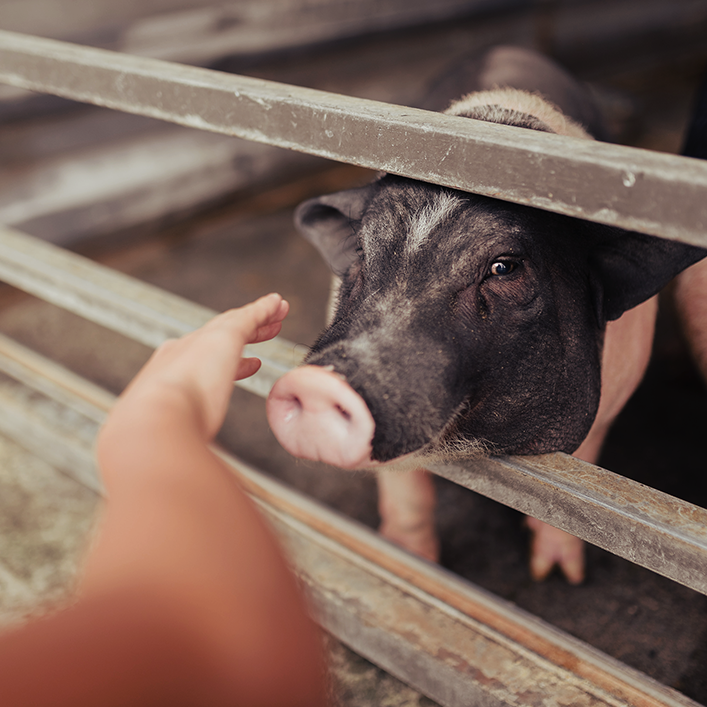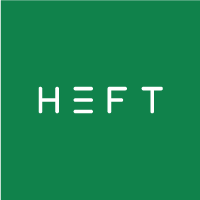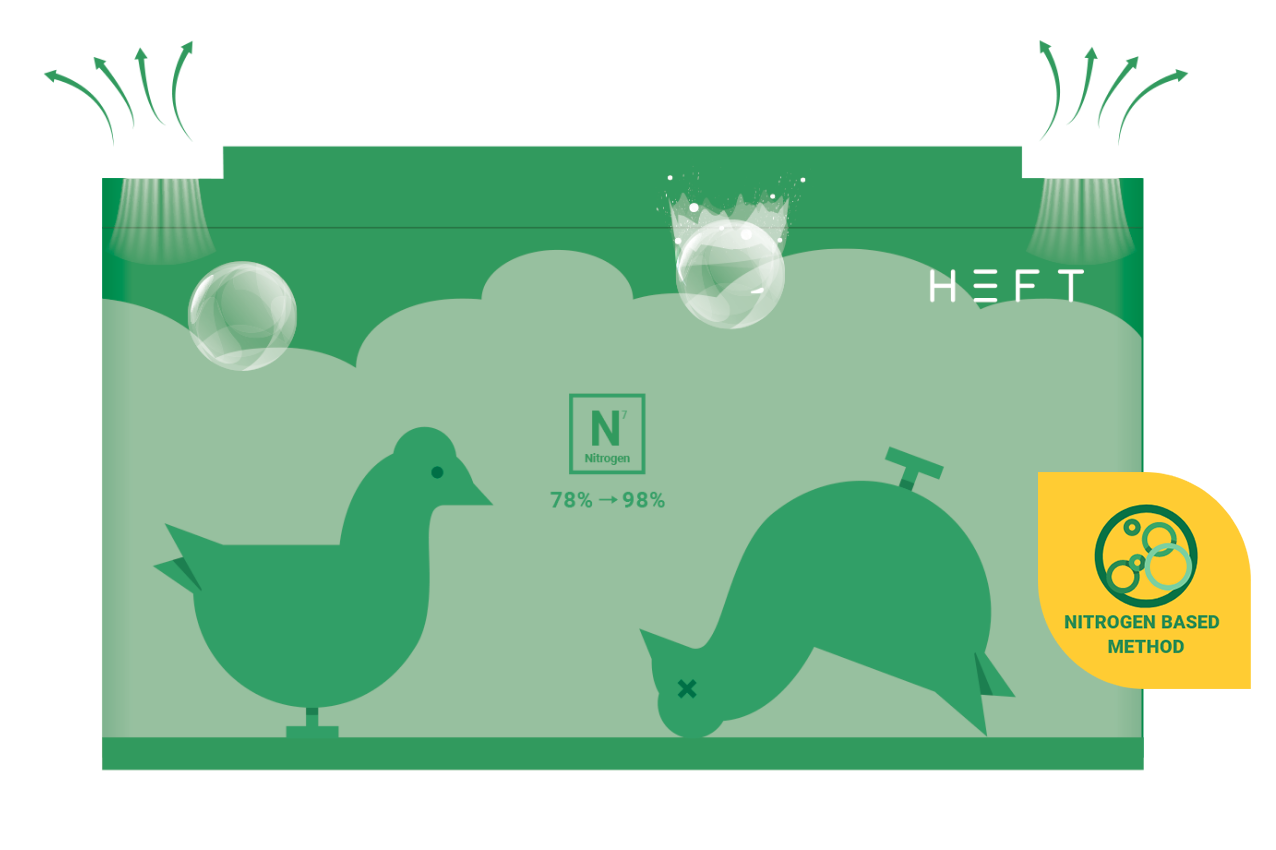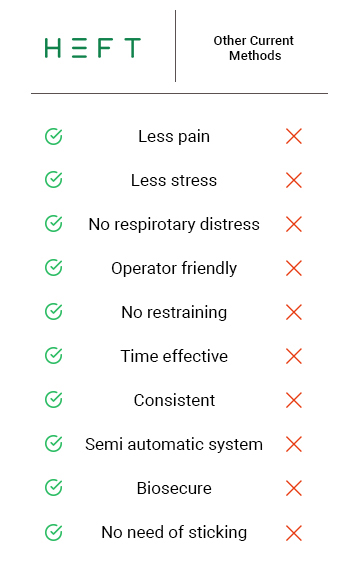
More humane stunning.
Nitrogen due to its inert, tasteless, and odorless nature facilitates more humane stunning and utilizing it together with high expansion foam makes a robust and efficient method. The nitrogen-encapsulated foam builds from the floor and up, effectively pushing out the air through the air vents in the top of the container. As the foam covers the animals head, they are instantaneously transited from atmospheric air to an anoxic environment of less than 2% oxygen.
When the container is completely filled with foam, the foam is broken by a burst of nitrogen to eliminate the risk of air pockets, allowing for visibility of the procedure, and creating a homogeneous atmosphere for accurate oxygen measurements. Without reaction to the sudden changes in the atmosphere, the animal lose consciousness within a few breaths. The animal then remain in the controlled atmosphere of the closed container for 5 minutes to achieve irreversible stunning.
Key technical features.

Innovation made in Sweden.
HEFT’s innovative solutions are developed and manufactured to meet our high standards as a Swedish product, while also enduring the demanding conditions of farm environments. From conception to completion, every component undergoes careful selection based on functionality, origin, and quality. Our solutions are designed with ease of use and respect for animal welfare in mind.




